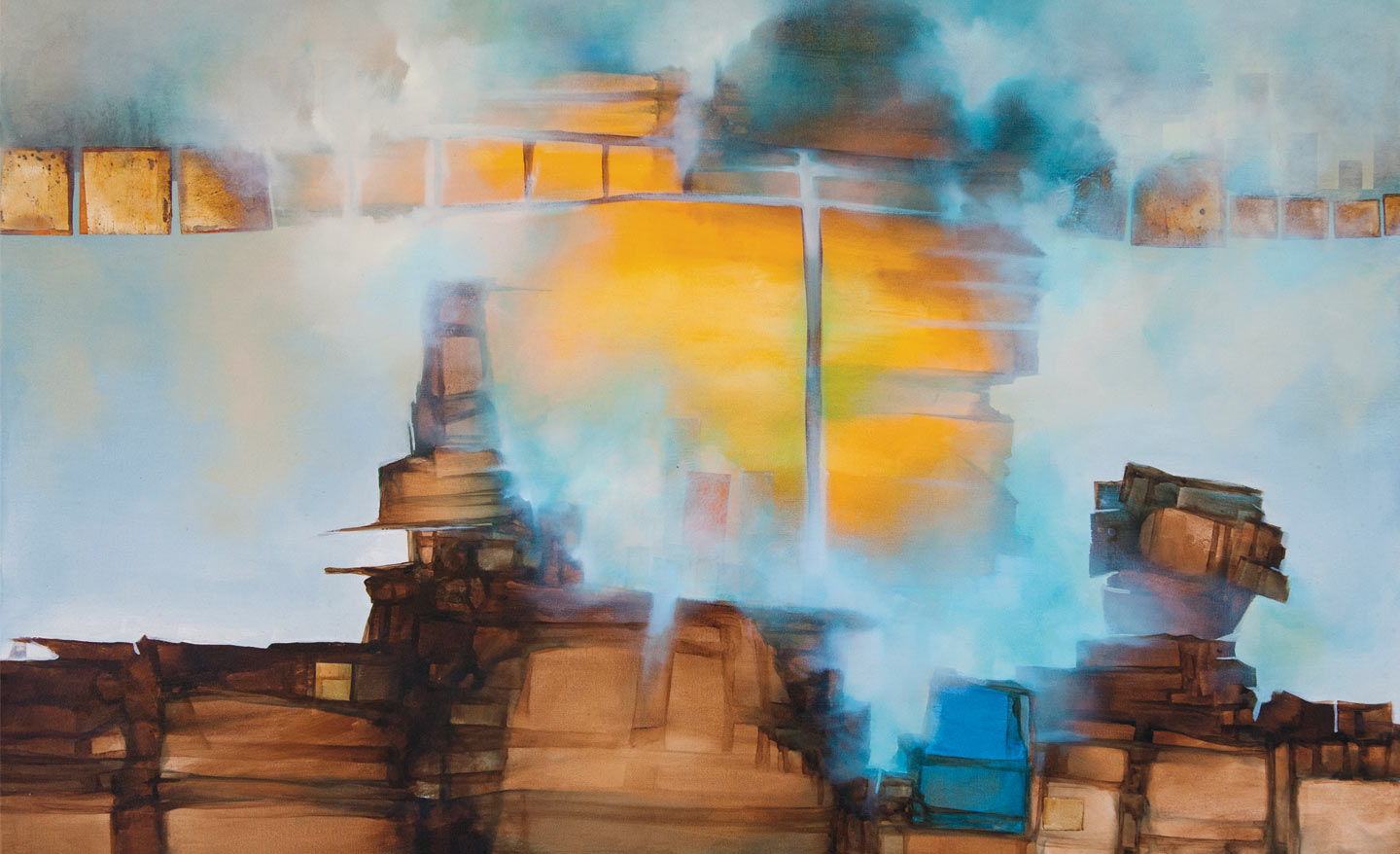Art for Immigration
“Intersections: A Benefit Exhibition for the Immigration Advocacy and Support Center” was on display this fall at Conn.
Varied in media—from painting to printmaking to sculptural installation—and in topic—from spiritual traditions to the war in Syria to gentrification—the artwork on display this fall in the College’s Cummings Arts Center galleries had one thing in common: the pieces were all created by artists born outside of the United States who now live and work in the region.
The Art Department’s “Intersections: A Benefit Exhibition for the Immigration Advocacy and Support Center,” which was on display Sept. 5 through Oct. 12, featured the work of Corina S. Alvarezdelugo, Rafael Colon, Guido Garaycochea, Mohamad Hafez, Tedman David Martínez Onofre, Nadine Renazile and Pierre Sylvain.
The artists, originally from Peru, Venezuela, Puerto Rico, Haiti and Syria, are now working in New London, Middletown, New Haven and New York. Their featured work reflected common themes, such as bridging cultures and negotiating the joys, struggles and sorrows created by gaps between communities.
“The show makes an implicit statement about the value of all voices, particularly people who have emigrated to this country and contribute to our society and culture in innumerable ways,” said Assistant Professor of Art Chris Barnard, who helped organize the exhibition.
In addition to the local artists, the exhibition included works by three Connecticut College alumni, Miles Ladin ’90, Juan Flores ’16 and Melissa Luen ’17, that explored immigrant and migrant experiences and identities in the U.S.
All of the artwork in the exhibition was for sale with half of all proceeds benefitting the Immigration Advocacy and Support Center, a New London-based nonprofit that provides legal services to immigrants.
Art Department faculty worked closely with representatives from the IASC for more than a year to identify artists and curate the show. Since that time, political rhetoric concerning immigration has only intensified.
“Art plays a role in this discussion, as in all discussions, because sometimes art is the only avenue to say things that can’t otherwise be said,” Barnard explained. “It’s also a sign that authoritarian regimes (or tendencies) almost immediately target artists. I think that shows the power of creative expression, and power and responsibility that come with being able to show art and choosing what to dedicate time, space and resources to.
“We as a department felt it an appropriate time to dedicate our space and promotional resources to these artists, and this cause.”
